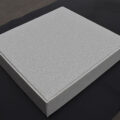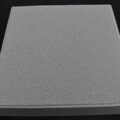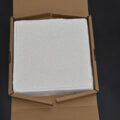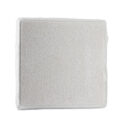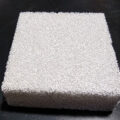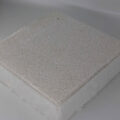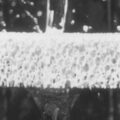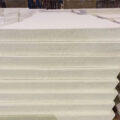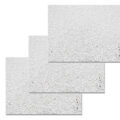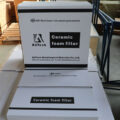In the pouring process, most of the metal liquid is filled into the cavity in a turbulent state, especially in the initial stage of pouring, the molten metal enters the cavity from a certain height. Due to the meandering and bending of the flow path of the ceramic foam filter, the rectifying ability of the liquid metal from turbulent to laminar flow is strong. The metal foundry filter makes the molten metal with strong turbulent flow become laminar.
After molten metal has passed through the ceramic foam filter, it is necessary to go through a longer transition zone before returning to the original turbulent state. In this transition zone, the liquid flow can no longer develop into turbulent flow or small turbulence, avoiding the secondary oxidation of the metal and the scouring of the mold, thereby preventing the formation of slag blocking of secondary oxide inclusions.
The initial indentation aluminum melt initially passes through the pores of the metal foundry filter, and it is necessary to overcome the surface tension, the flow along the path, and the resistance of the local flow, and then there must be a certain initial pressure head.
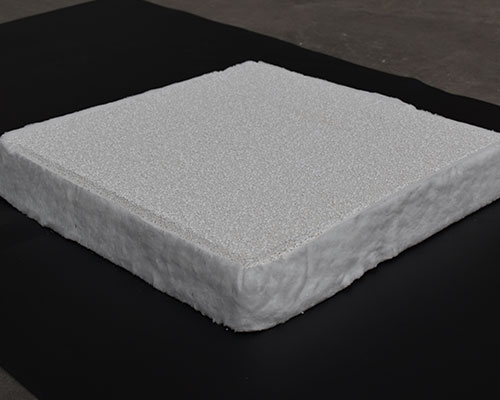
Only the initial head of the aluminum melt is satisfied, and the aluminum melt can be filtered through the pores of the filter plate. Otherwise, the filtration process of the aluminum melt is difficult to achieve. Therefore, the initial indenter is the key to the ability to form a filter. The pore size of the filter plate, the temperature of the melt, and the chemical composition are all factors influencing the initial head.
In use, it is found that the initial indenter is generally millimeters. After the metal foundry filter enters the working state, that is, the steady-state, the pressure head is about millimeters to ensure the smooth progress of the filtration.
In the initial stage of foundry casting filtration, the aluminum melt temperature is initially reduced as the filter absorbs the heat of the aluminum melt. In order for the aluminum melt to maintain sufficient fluidity at the initial stage, the temperature is usually not lower than that, and the filter plate is sufficiently preheated before use, and the temperature is preferable.
In general, the smaller the pores of the Alumina Ceramic Foam Filter, the more the particle particles are filtered out; the thicker the filter plate, the smaller the particle size of the filtered particles, that is, the higher the filtration precision.

